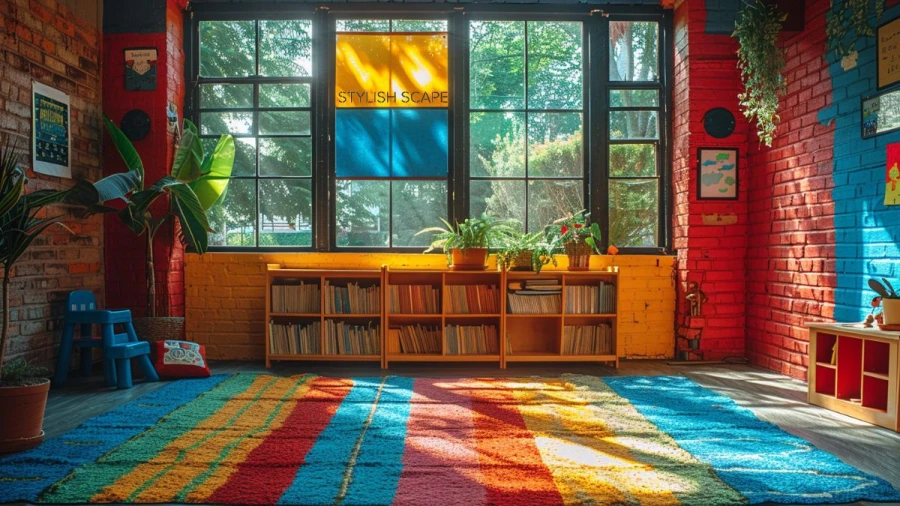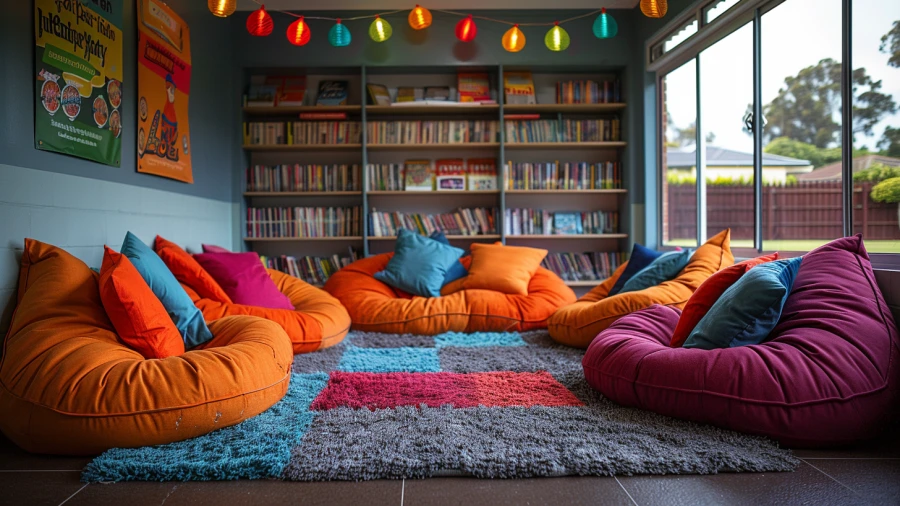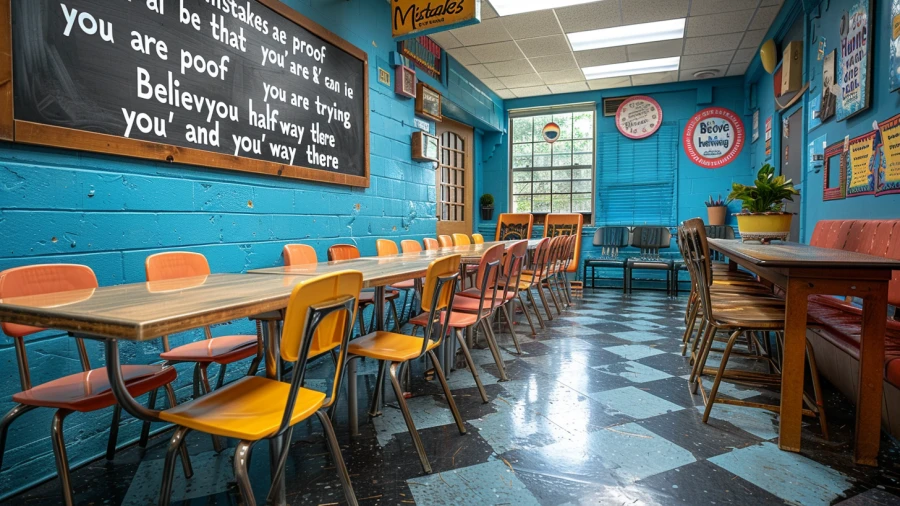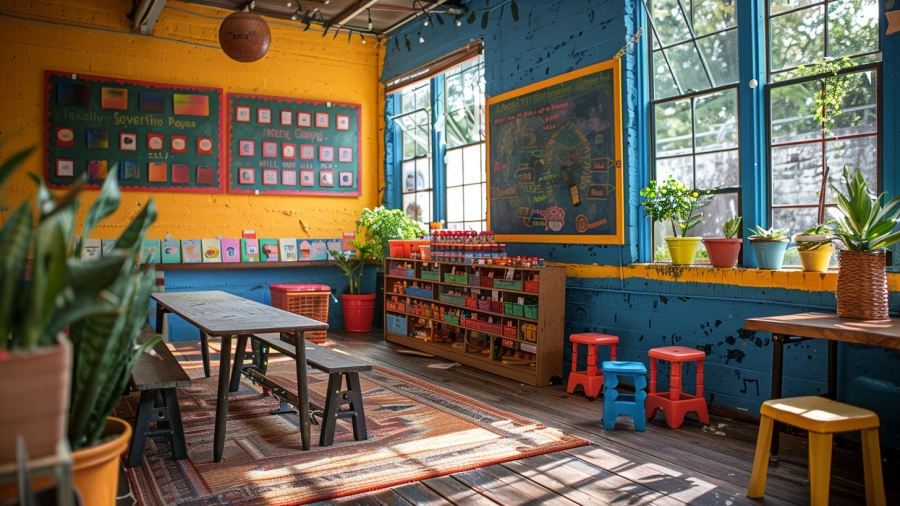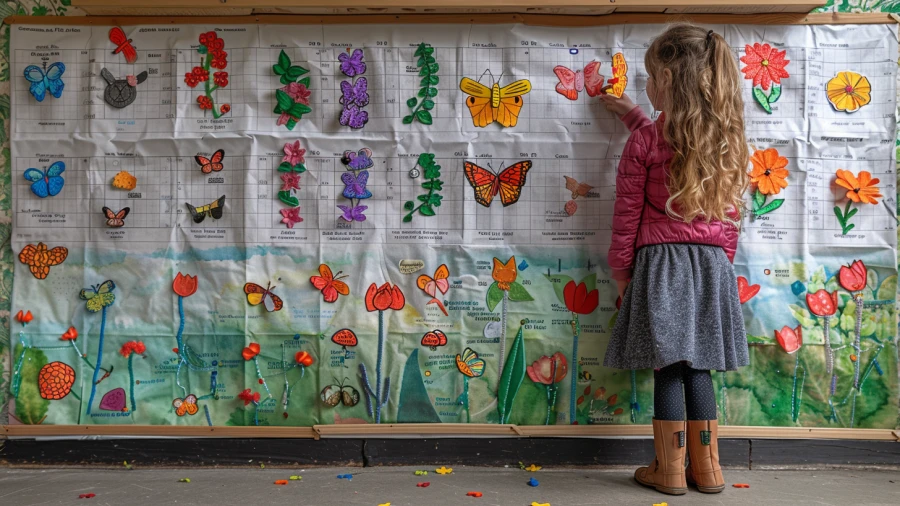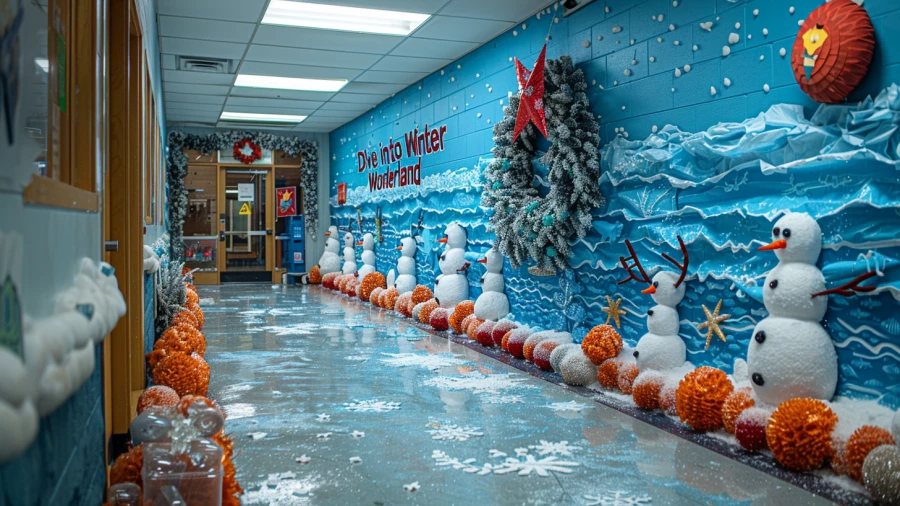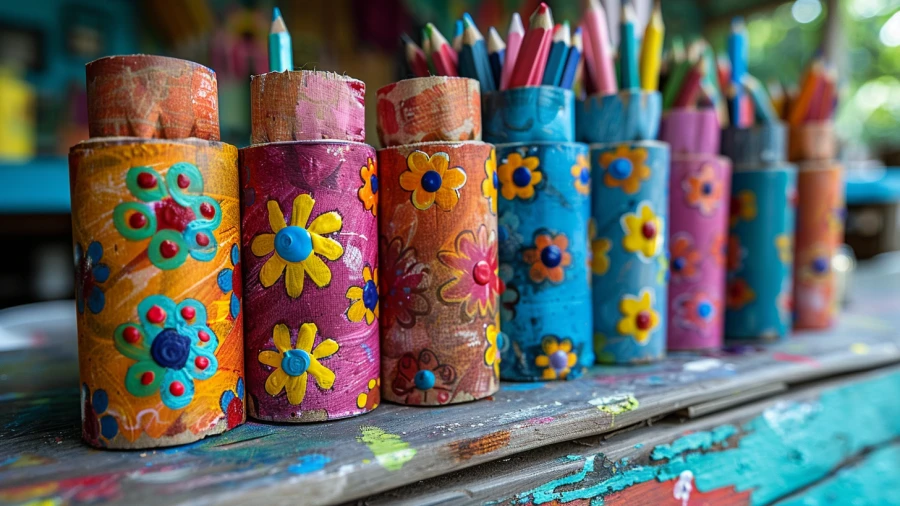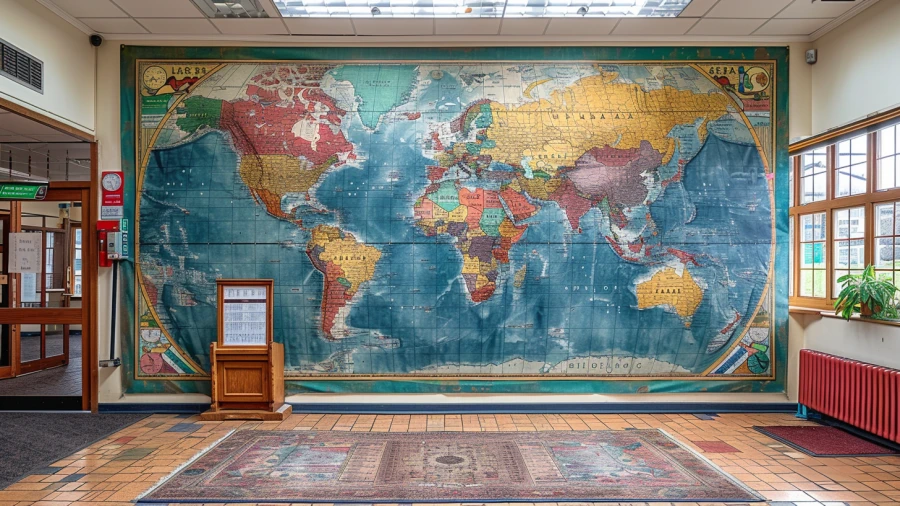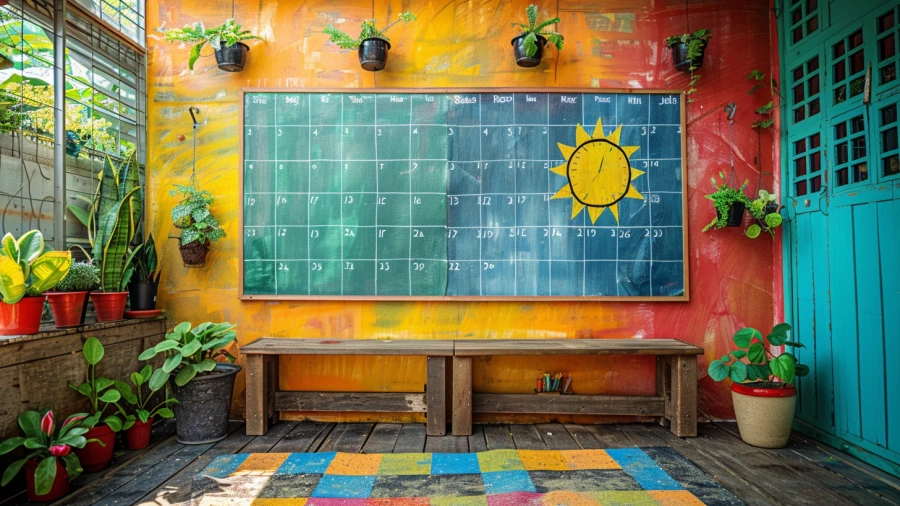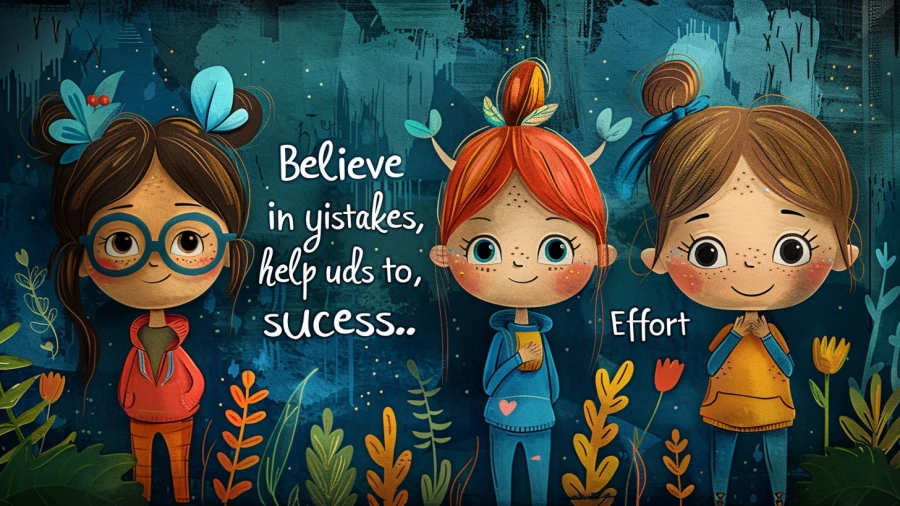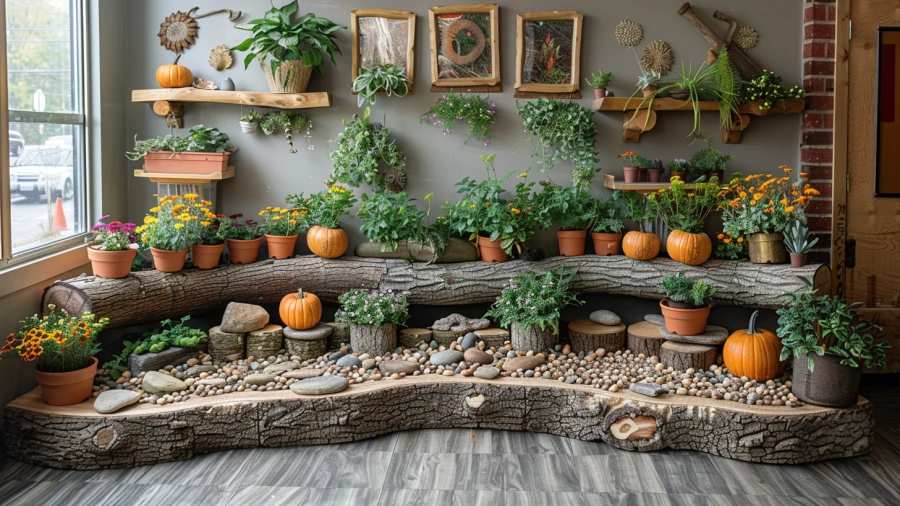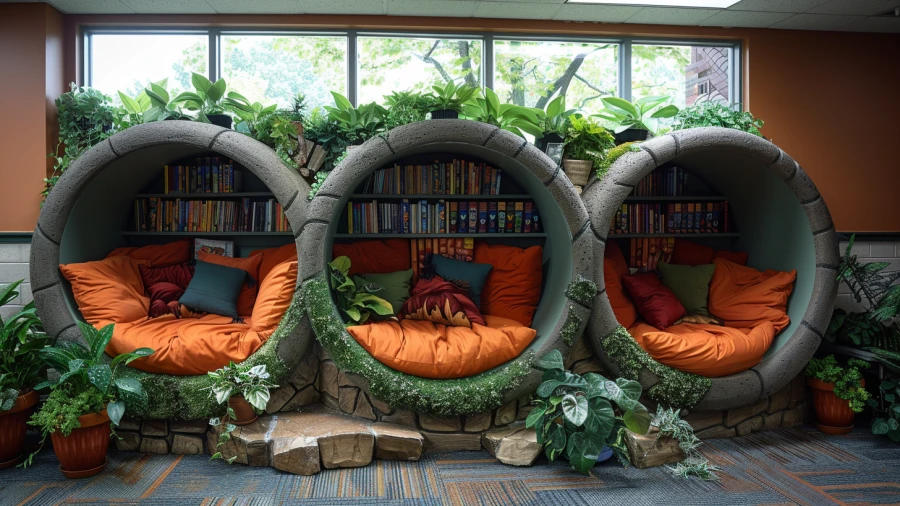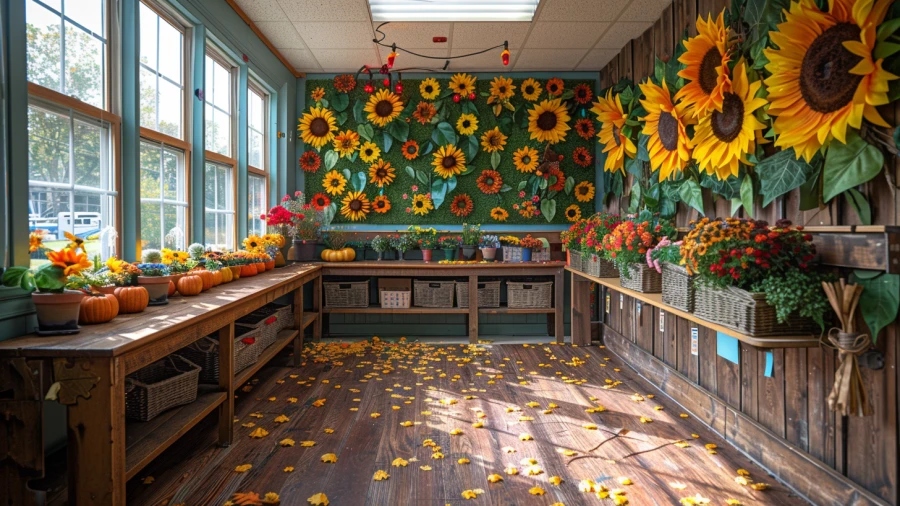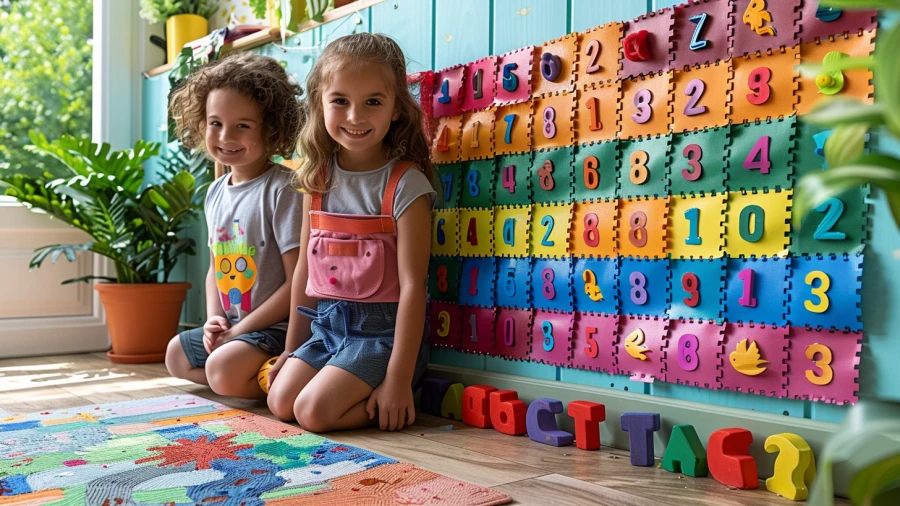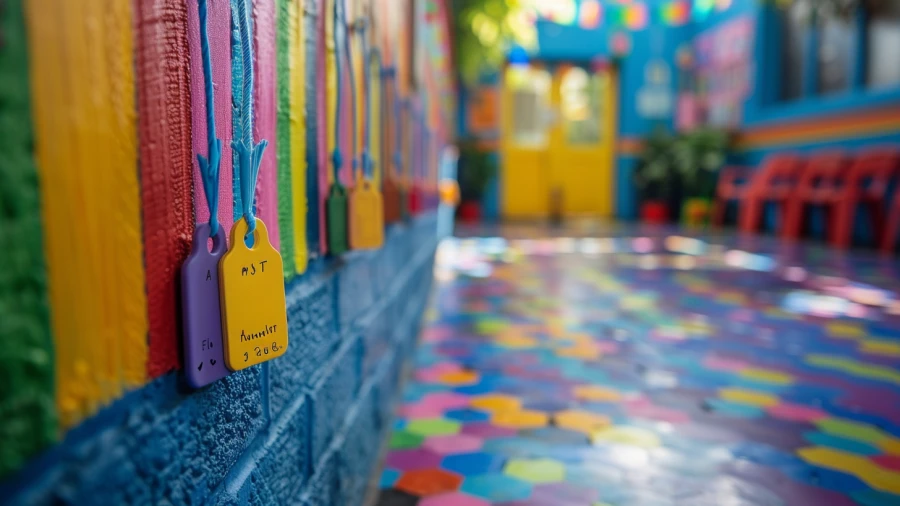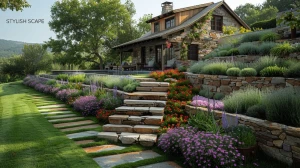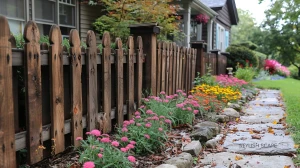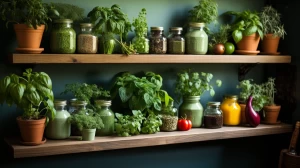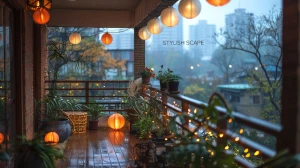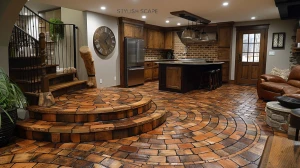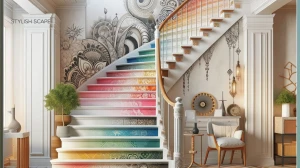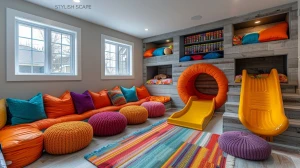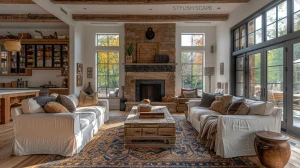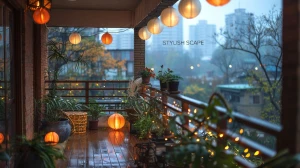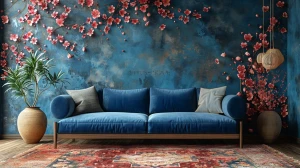
20 Classroom Decoration Ideas for Creating a Vibrant Learning Space
Explore Classroom Decoration Ideas to create a vibrant and inspiring learning space. Discover tips on themed bulletin boards, cozy reading corners, interactive charts, and seasonal decorations to make your classroom engaging, welcoming, and fun for all students.
by B Kishwar
Updated Jun 12, 2024
On This Page
- Classroom Decoration Ideas
- Themed Bulletin Boards
- Reading Corner Classroom
- Inspirational Quotes
- Student Work Display Classroom
- Interactive Wall Charts
- Classroom Rules Poster
- Themed Classroom Door
- DIY Pencil Holders
- World Map classroom
- Calendar and Weather Chart
- Growth Mindset Posters
- Nature Elements Classroom
- Classroom Jobs Chart
- Bright and Colorful Borders
- Learning Stations Classroom
- Themed Reading Nooks
- Chalkboard Wall Classroom
- Seasonal Decorations
- Alphabet and Number Lines
- Personalized Name Tags
Classroom Decoration Ideas
Classroom decoration is essential for creating an engaging and welcoming learning environment. Start by using bright colors and themed bulletin boards to make the room visually appealing. Designate specific areas like a reading corner with cozy seating and bookshelves. Display inspirational quotes and student work to motivate and celebrate achievements. Incorporate interactive elements like wall charts for hands-on learning.
Use natural elements such as plants to create a calming atmosphere. Establish classroom rules with a clear, attractive poster. Add personal touches with DIY decorations like pencil holders and name tags. Seasonal decorations keep the environment fresh and exciting. Overall, thoughtful decorations can enhance students' learning experience and create a positive classroom community.
Themed Bulletin Boards
Adding themed bulletin boards to your classroom is a great way to give it more visual appeal and educational value. Select a theme that fits along with the seasons, holidays, and current lessons. For instance, make a "Space Exploration" board with planets, astronauts, and interesting solar system facts during a science unit on space. A "Harvest Festival" theme including pumpkins, leaves, and student artwork can be on exhibit in the fall.
These whiteboards are interactive teaching aids in addition to improving the aesthetics of the classroom. Themes should be changed frequently to keep the information current and engaging for pupils, who will then look forward to seeing new displays.
Reading Corner Classroom
Students can appreciate literature in a warm and friendly environment by setting up a reading corner. Arrange a space with cozy seating, such as tiny sofas, bean bags, or pillows. To accommodate a range of interests, include shelves stocked with a selection of age-appropriate literature, including both fiction and non-fiction. Use vibrant posters, fairy lights, and themed decorations to furnish the area following the present curriculum or well-known children's books.
By providing students with a cozy and inviting space to immerse themselves in a good book, this unique location can encourage a love of reading while also improving their literacy and creative thinking.
Inspirational Quotes
Students can be inspired and motivated by inspirational quotation decor in your classroom. Choose sayings that encourage optimism, tenacity, compassion, and a growth attitude. Print these sayings in large, eye-catching typefaces, frame them, or arrange them in an artistic arrangement on the walls. For instance, sayings like "Mistakes are proof that you are trying" or "Believe you can and you're halfway there" can be especially motivating.
To keep the quotes' messages fresh and relevant, change them regularly. You may contribute to the creation of a nurturing and motivating learning atmosphere where kids feel driven to perform to the best of their abilities by surrounding them with positive affirmations.
Student Work Display Classroom
Displaying student work is an excellent means of recognizing their accomplishments and enhancing their self-esteem. Assign a bulletin board or a part of the wall to the display of student projects, writing assignments, and artwork that vary on a regular schedule.
To create a visually appealing and well-organized exhibit, incorporate vibrant borders, labels, and themes. Students are inspired to work hard because they know that their work may be showcased, which not only helps them feel good about it but also drives them to do their best. A student work exhibit, which showcases the variety of skills and creativity present in the classroom, promotes a sense of success and friendship.
Interactive Wall Charts
Interactive wall charts are dynamic tools that can enhance student engagement and learning. These charts can cover a wide range of topics, including science, arithmetic, and grammar. A math chart might, for instance, have a number line, shapes, or multiplication tables with student-movable Velcro parts.
The life cycle of a butterfly with removable parts might be shown on a science chart. Encourage kids to use these charts to engage in hands-on learning and repeat important topics during class or during their spare time. Interactive wall charts enhance student engagement in the classroom and support a variety of learning preferences, making learning enjoyable and dynamic.
Classroom Rules Poster
To create an inviting and well-organized learning environment, a classroom rules poster is necessary. Make a poster that is eye-catching and summarizes the important guidelines and standards for classroom behavior. To make the poster interesting and simple to read, use straightforward language and add eye-catching images or icons. Such guidelines may include "Listen Carefully," "Respect Others," "Raise Your Hand to Speak," and "Keep Your Area Tidy."
The poster should be put up in a visible location for every student to view. Maintaining a calm, polite classroom environment and encouraging positive behavior are made possible by routinely reviewing the rules and reading the poster.
Themed Classroom Door
A themed classroom door can make your classroom inviting and set the tone for learning. Depending on the season, the theme of the class, or a particular occasion, decorate the door. For instance, cover the door with blue paper and decorate it with sea life, waves, and a "Dive into Learning" sign during an ocean lesson. Use snowmen, snowflakes, and a "Winter Wonderland" theme to celebrate winter.
Add the names of the pupils or their artwork to make it unique to foster a sense of pride and ownership. Regularly changing the door design keeps things interesting and stimulating, piquing students' interest and igniting their passion as they enter the classroom.
DIY Pencil Holders
In addition to keeping resources organized, handmade pencil holders provide the classroom with a unique and artistic touch. Students can decorate recyclable objects, such as cardboard tubes, jars, or tin cans, using paint, stickers, and colorful paper.
Put the names of the pupils or the disciplines they are studying (math, painting, etc.) on each holder to keep various pencils and instruments organized. In addition to encouraging creativity and environmental consciousness, this project teaches kids to be accountable for their supplies. Finished holders should be placed on desks or a supply station so that writing instruments like pencils and markers are always accessible and neatly kept.
World Map classroom
A World map is a wonderful classroom decor and teaching aid. A big, vibrant map should be placed where students can see it easily. Teach geography, global cultures, and current affairs with it. Places that you are learning, or locations relevant to class tasks can be marked with stickers or pins.
Include interactive exercises like having students gather and present data on various nations. In addition, the map can be used as a visual aid in history classes or debates on international issues, which will help students learn more effectively and practically.
Calendar and Weather Chart
A weather chart and calendar are useful and instructive additions to any classroom. To educate children about dates, months, and days of the week, set up a sizable calendar. Use it to indicate deadlines, holidays, and significant occasions. Place a weather chart next to the calendar so that kids can note the daily weather.
Add sections for the temperature, kind of weather (sun, rain, or snow), and any noteworthy weather trends. Assign a weather assistant daily to update the chart, encouraging accountability and consistency. Using these resources, students can become active participants in the everyday activities of the classroom and have a better grasp of weather and time management.
Growth Mindset Posters
Growth mentality posters are effective aids for fostering a positive outlook on education and tenacity. Posters featuring sayings like "Believe in yourself," "Mistakes help us grow," and "Effort leads to success" should be displayed throughout the classroom. Make the messages stand out by using eye-catching colors and captivating fonts. These posters serve as a helpful reminder to pupils that aptitude and intelligence may be enhanced with commitment and diligence.
Talk about the growth mindset themes with your kids on a regular basis, and use the posters as a reminder. You may assist pupils in becoming more resilient, driven, and open to taking on difficulties by encouraging a growth attitude in them.
Nature Elements Classroom
A peaceful and revitalizing learning atmosphere can be produced in the classroom by incorporating natural elements. To add a little greenery, add flowers, potted plants, or even a tiny indoor garden. When creating decor and educational materials, use organic elements like wood, stones, and shells.
To further the concept, hang posters or pictures of animals, ecosystems, and natural settings. Think about setting up a magnifying glass and nature observation section filled with rocks, leaves, and feathers for kids to examine. Incorporating elements of nature into the classroom not only enhances its aesthetic appeal but also fosters a sense of peace and natural curiosity.
Classroom Jobs Chart
Students' feelings of responsibility and teamwork are encouraged by a jobs chart in the classroom. Construct a vibrant and well-structured chart that enumerates the different roles in the classroom, such as snack assistant, librarian, line leader, and board cleaner. Assign students to these tasks in a rotating manner to make sure all students have an opportunity to participate. You may quickly alter and display job assignments by using magnets, clothespins, or pockets.
Add amusing pictures or images to the chart to show off the activities being completed. This technique helps to maintain an organized and productive learning environment while instilling in kids the value of contributing to the classroom community and growing in a sense of responsibility.
Bright and Colorful Borders
Your classroom can be instantly made more welcoming and brighter with vibrant borders. To add a splash of color and identify areas, use borders around whiteboards, windows, doors, and bulletin boards. Select from a range of patterns, including stars, stripes, polka dots, and seasonal themes, to go with the current decor in the classroom.
In addition, you may use these borders to frame student work exhibits, which will help them stand out more. You may create a happy and stimulating environment that can increase students' attitudes and excitement for learning by adding these understated yet colorful accessories.
Learning Stations Classroom
Learning stations are places set aside in the classroom where students can work on certain tasks associated with various subjects or abilities. Organize different areas for technology, science, math, reading, and art. Every station should be equipped with all the tools needed for the tasks at hand as well as detailed instructions. To make the stations seem inviting and well-organized, adorn them with relevant charts, posters, and bright displays.
Continually switch up the activities to keep pupils interested and involved. Learning stations promote both individual and group learning by giving students the freedom to study a subject in-depth and at their own speed. They also offer possibilities for practical, interactive experiences.
Themed Reading Nooks
Themed reading nooks turn drab classroom corners into enchanted places that pique students' interest in reading. Furnish snug spaces with cushions, bean bags, or compact armchairs for comfortable seating. Use themes like a spaceship, a jungle safari, or a fantasy castle to decorate these alcoves. To strengthen the theme, add decorations, props, and posters that are relevant.
To accommodate a range of interests, offer a selection of books that complement the theme in addition to a wide range of other genres. These cozy corners provide kids with a unique space to read and explore, enhancing the reading experience and encouraging a lifetime love of books.
Chalkboard Wall Classroom
The classroom is made more lively and engaging by the addition of a chalkboard wall. Students can write and draw directly on a wall that has been painted with chalkboard paint, or on a portion of a wall. This area can be used for many different things, like arithmetic problems, spelling drills, drawing, and idea generation.
To keep the material engaging and pertinent to the concepts being taught, change it frequently. In addition, a daily challenge or question for the pupils to answer can be posted on the chalkboard wall. With the help of this interactive tool, students may participate more actively and creatively, which makes learning more interesting and hands-on.
Seasonal Decorations
All year long, seasonal decor in the classroom creates a joyful and new ambiance. Use themes that correspond with the current season or impending holidays to decorate the classroom. Use scarecrows, leaves, and pumpkins in the fall, and snowmen, snowflakes, and holiday lights in the winter. Summertime can feature beach-themed accessories like suns and flip-flops, while spring might feature pastel colors, flowers, and butterflies.
To make the place feel more unique, incorporate student-made crafts and artwork into the decor. Incorporating decor that changes into the classroom setting helps to sustain students' attention and passion for learning.
Alphabet and Number Lines
For younger students, number lines and the alphabet are vital teaching resources. Place these lines clearly at a height where students may easily view and refer to them during the classroom. Employ legible, large fonts and vivid colors to increase exposure. Uppercase and lowercase letters, as well as images of objects that begin with each letter, can be included in alphabet lines. Sequentially displayed numbers should be shown on number lines, which can also have images to show quantities.
Students can learn basic math concepts, sequence, and letter and number recognition with the aid of these visual aids. They act as ongoing resources to enhance learning and repeat lessons and concepts.
Personalized Name Tags
In the classroom, personalized name tags help children feel like unique individuals. Make unique and colorful name tags for every student, then hang them from coat hooks, cubbies, or desks. Put the students' names in bold type and let them personalize the tags with stickers, drawings, or colors of their choice.
Students feel unique and acknowledged when they receive this personalization. Name tags also contribute to classroom order by making it easier for pupils to discover their locations and clearing up confusion. They can be utilized for a variety of tasks, such as group projects and classroom work, which helps children develop a sense of responsibility and community.
